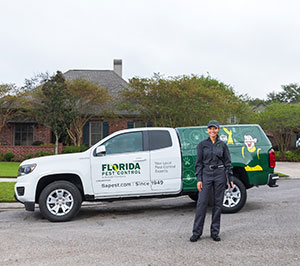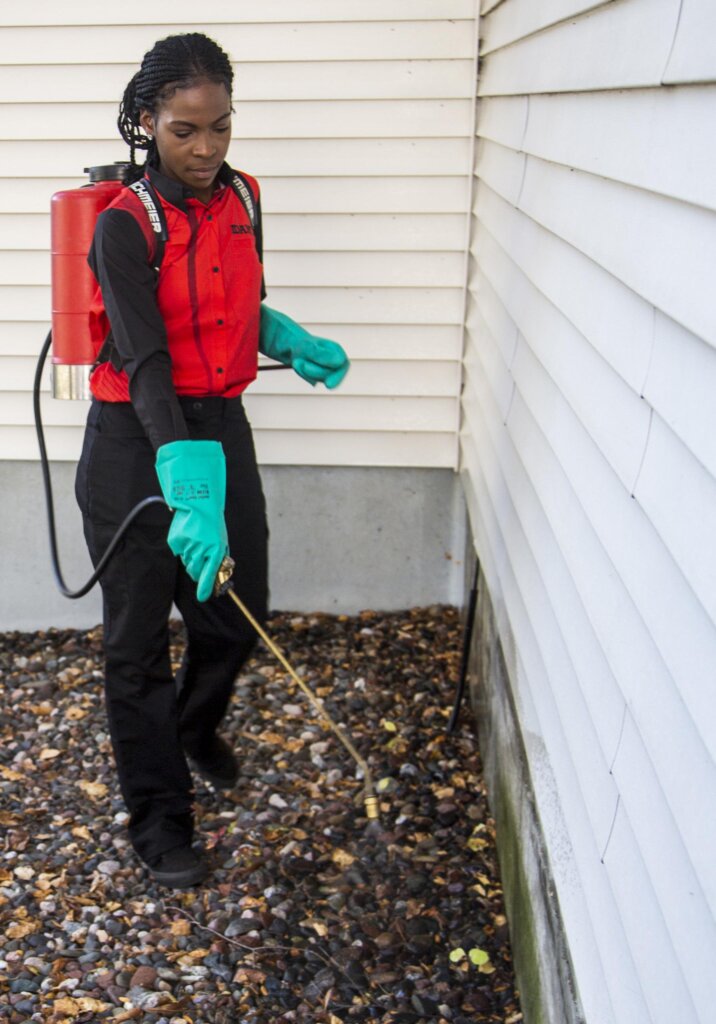A1 Bed Bug Exterminator Charlotte - Reliable and Inexpensive Services
A1 Bed Bug Exterminator Charlotte - Reliable and Inexpensive Services
Blog Article
Bed Pest Therapy Break Down: Contrasting Chemical Vs. Non-Chemical Solutions
In the realm of bug control, specifically when managing the persistent issue of bed bugs, the option between chemical and non-chemical treatment solutions can be a pivotal one. Both strategies supply distinct benefits and disadvantages, affecting aspects such as efficiency, security considerations, and total cost. By examining the nuanced information of each method, a clearer understanding of which path to go after in dealing with a bed bug invasion can be obtained.
Efficiency of Chemical Therapies
Chemical therapies for bed insect problems have actually been widely recognized for their rapid and potent efficacy in getting rid of these parasites. When considering the effectiveness of chemical treatments, it is crucial to recognize that they can provide a fast and comprehensive service to a bed pest trouble.
Additionally, chemical therapies have the benefit of using recurring effects, implying that they can continue to remove bed insects also after the first application. This residual action is especially valuable in combating any kind of potential re-infestations. Furthermore, the quick action of chemical therapies can bring alleviation to individuals dealing with serious bed insect invasions, enabling them to gain back control of their space rapidly.
Safety And Security Interest In Chemical Solutions
When utilizing chemical options for bed pest treatment is guaranteeing the security of owners and the setting,One important element that needs mindful consideration. While chemical treatments can be reliable in removing bed insects, they may present threats otherwise dealt with appropriately. Among the main safety interest in chemical remedies is the prospective damage they can trigger to human health and wellness. Direct exposure to particular chemicals utilized in bed insect therapies can result in breathing problems, skin irritability, or other unfavorable responses, especially in people with pre-existing problems or sensitivities. In addition, inappropriate application or dosage of chemical pesticides can cause hazardous deposits sticking around in the treated area, posing long-lasting health and wellness dangers to passengers.
Additionally, the ecological influence of chemical remedies is an additional significant factor to consider. Some pesticides utilized in bed insect treatments may be harmful to advantageous pests, wildlife, and environments if they seep right into the dirt or water supply. It is important to make use of chemical therapies deliberately, following security standards, and thinking about less harmful alternatives to alleviate these dangers and guarantee the reliable and risk-free management of bed bug invasions.
Benefits of Non-Chemical Methods
Thinking about the potential safety and security issues and environmental influence associated with chemical remedies for bed pest treatment, discovering non-chemical methods provides an appealing option with numerous distinct advantages. Non-chemical treatments are environmentally pleasant, as they do not add to air or water air pollution, making them a lasting option for insect control.
Furthermore, non-chemical solutions can be reliable in targeting bed insects, consisting of hard-to-reach locations where chemical treatments might not penetrate. Methods such as heat therapy, vacuuming, vapor cleaning, and cushion coverings give detailed elimination without making use of dangerous chemicals. Furthermore, non-chemical methods can be less turbulent, requiring what is pest control at home minimal prep work and enabling quicker reentry into dealt with areas. On the whole, choosing for non-chemical bed pest therapy approaches not just focuses on security and ecological defense however additionally ensures extensive and reliable pest control.
Limitations of Non-Chemical Treatments

In addition, non-chemical therapies usually require multiple applications to attain effective removal. This can be taxing and may not constantly ensure full elimination of all bed bugs and their eggs, particularly in hard-to-reach or hidden areas.
In addition, the success of non-chemical treatments heavily counts on appropriate execution and thoroughness, which can be testing for individuals without professional knowledge. Inadequate application of non-chemical approaches may result in incomplete removal, causing persistent problems and the requirement for added treatments.
Therefore, while non-chemical therapies have their benefits, it is necessary to acknowledge these restrictions and consider them when identifying the most reliable technique for taking care of bed pest problems.
Cost Comparison: Chemical Vs. Non-Chemical Options
Provided the restrictions connected with non-chemical therapies, an essential aspect to assess in the context of bed bug management is the cost comparison in between chemical and non-chemical choices. Chemical treatments usually entail the application of insecticides by professionals, which can vary from $250 to $900 per area, depending upon the severity of the infestation and the dimension of the location to be dealt with. On the other hand, non-chemical treatments like warm therapy Read Full Article or steam can be extra costly, with costs ranging from $1,000 to $6,000 for an entire home. While the preliminary cost of chemical treatments may seem lower, numerous therapies may be called for to totally remove the problem, possibly raising the total cost. On the various other hand, non-chemical options might give an extra sustainable and environment-friendly solution, although they can be cost-prohibitive for some people. Inevitably, when considering the expense of bed insect therapy choices, it is very important to evaluate the upfront expenditures versus the efficiency and long-term sustainability of the picked approach.
Conclusion

Considering the prospective security problems discover this and environmental influence linked with chemical options for bed insect therapy, discovering non-chemical strategies presents an appealing alternative with several distinct benefits.Provided the constraints linked with non-chemical treatments, a crucial element to evaluate in the context of bed bug administration is the price contrast between chemical and non-chemical choices. In comparison, non-chemical treatments like warm treatment or steam can be a lot more pricey, with costs ranging from $1,000 to $6,000 for an entire home. While the initial price of chemical treatments might seem lower, several treatments might be called for to fully remove the invasion, possibly raising the general expense.In final thought, when comparing chemical and non-chemical bed bug treatment options, it is necessary to take into consideration efficiency, security, advantages, restrictions, and expense.
Report this page